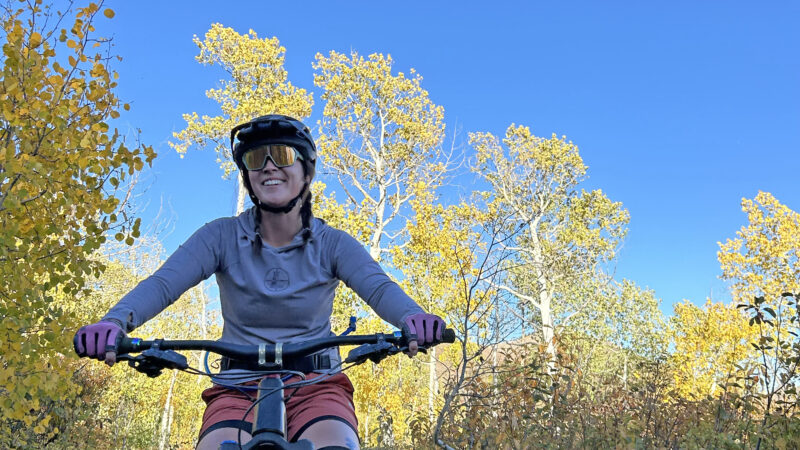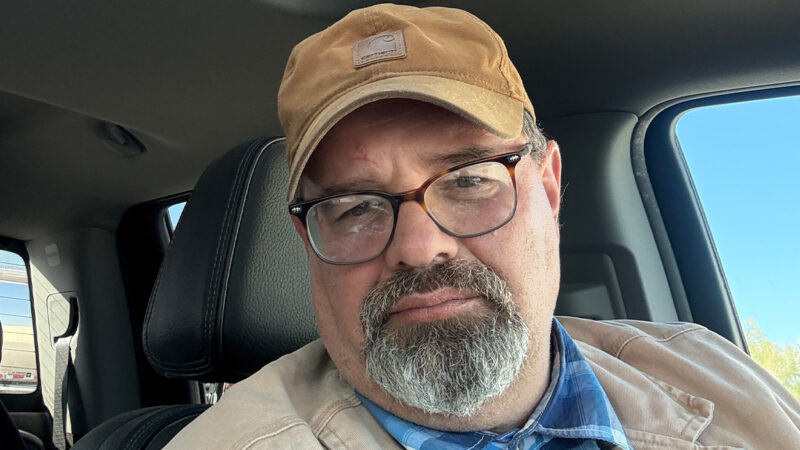Bulls of the Mescalero: A Southerner’s First Elk Hunt During the Rut
The big bull raged again, and my fingers tightened on the stock of my rifle. I glanced around at Vernon Scott, seated a few feet away. He nodded his head toward the tangle of oak brush in front of us, indicating that the bull would come in from that direction
Seconds later another shrieking bugle pierced the morning air. The call had lost all its musical quality and was now the wail of some primeval beast. We could hear the bull raking his antlers as he loosed his fury on oak saplings.
I slipped off the safety of my Model 70 Winchester .270 and turned the power ring on my scope down to 2X. The bull would be no more than 50 yards away when he came into view. I was certain that he would be moving, maybe coming straight for us in an insane rush to combat. I wanted all the field of view my scope could offer. My heart pounded.
Then limbs snapped to our right just out of view.
“He’s circling into the wind,” Vernon whispered. “He’ll soon get our scent unless you get him on in. Make another call on your bugle.”
I lifted the call to my lips and tried to sound like an elk aching for a fight. Instantly the bull bellowed an enraged reply. He was close now, and I was looking wildly for a target, but I still couldn’t spot him. Another limb broke farther to the right.
“We’ve had it,” Vernon muttered. “We’ve lost him.”
The last sound we heard was almost directly downwind of our position. We held our positions for half an hour while I made more challenges on my call. But our bull elk had vanished.
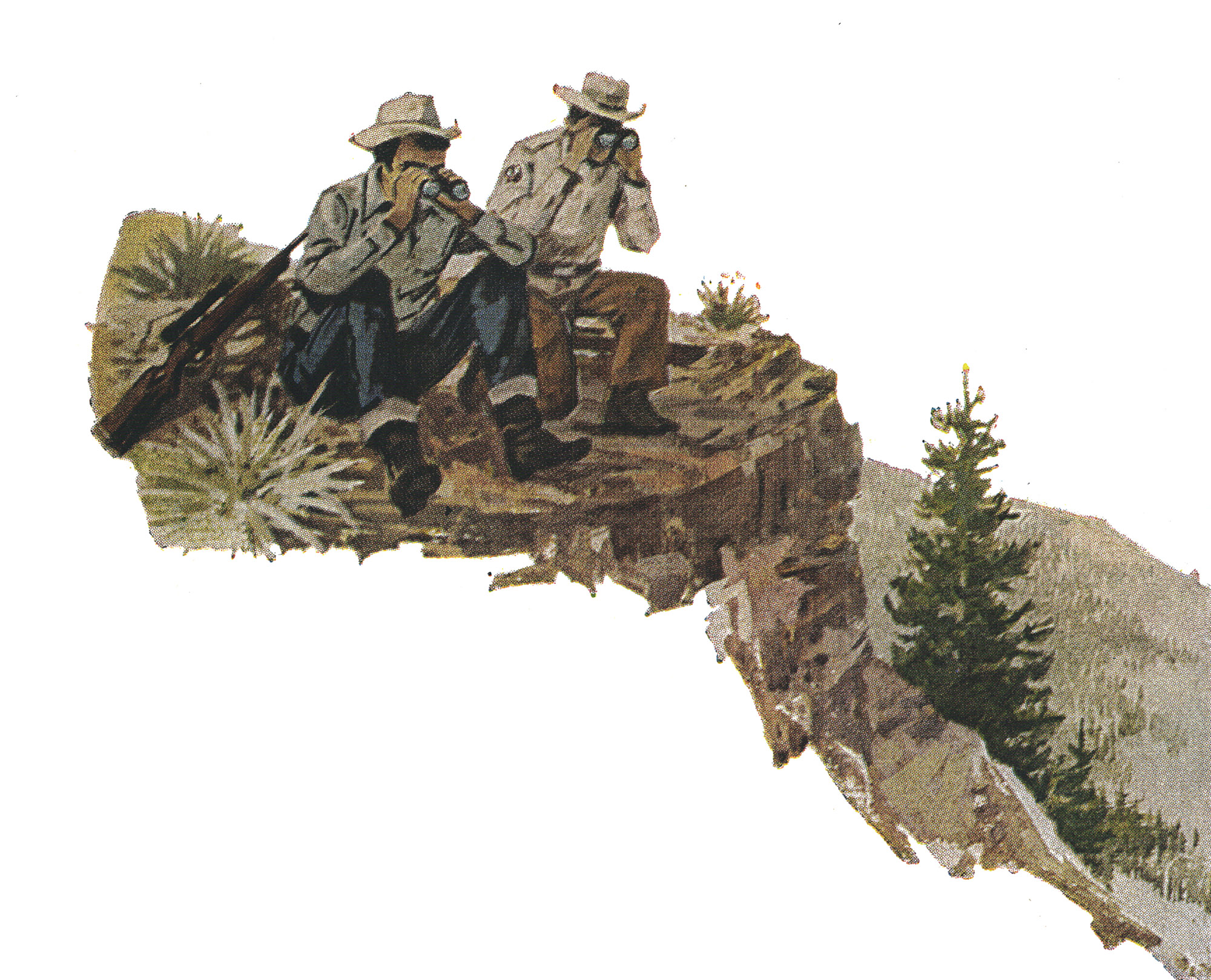
Illustration by Bob Cassell / Outdoor Life
I’m 40 and the Midsouth field editor for OUTDOOR LIFE. The experience described above occurred on an elk hunt I made last September.
For only the second time in this century the Mescalero Apache Indians were granting permits to hunt elk on their south-central New Mexico reservation, which contains over 460,000 acres of fine game country. Elevations vary from 5,500 feet to over 12,000 feet on Sierra Blanca peak.
Native game includes mule deer, whitetails, black bears, antelope, and wild turkeys, though only tribal members are permitted to hunt antelope and turkey. All hunting on the reservation is by tribal permit, and the costs of permits vary.
During 1966 and 1967 the tribe released 162 Rocky Mountain elk on reservation lands. Fully protected by the tribal Conservation Department, these animals multiplied rapidly in the near-perfect habitat.
A hunt was held during the fall of 1973, and a number of trophy bulls were taken. Additional elk needed to be harvested, so a second season, this time for both bulls and cows, was scheduled for September 28 to October 13, 1974. The season coincided with the peak of the rut, and bulls had to be five-pointers or better to be legal.
The fee for a bull permit was set at $800. Cow permits were $500. The New Mexico nonresident elk license costs $75.50. Since hunters could remain for the entire season these fees compared favorably with the cost of elk hunts in most Western states today.
Rental horses are available from the Indians or nearby livery stables for $10 to $15 a day. The Hunt Manager should be notified in advance if horses are desired so the stock can be reserved. There are no set guide fees; the hunter and his guide discuss and agree on the fees, which depend on what services you wish your guide to provide. The fees should be decided upon before the first day’s hunt.
At first I found only two cows. I eased up on one knee, and then I saw him 125 yards away. He stood huge and magnificent, with sweeping mahogany antlers, dark matted mane, and creamy brown hide. He carried six points on each side.
For noncampers numerous cafes and in hotels in nearby Ruidoso offer rooms for rent at an average of $12 per day. The Ciengita Resort is another possibility-if it’s completed in time for the 1975 hunting season. There are commercial flights into Roswell and Alamogordo daily. Rental vehicles are available in Roswell for $10 a day and 12¢ per mile. The town is about 75 miles from the reservation. Information about hunts on the reservation — including those for mule deer, whitetails, and black bears — is available from Vernon Scott, Hunt Manager, Mescalero Tribe, Mescalero, NM 88340.
By early August my plans were firm. Vernon Scott said that he would guide me and that I could pitch my tent on the reservation a few miles above Ruidoso.
I have always enjoyed sports in which calls can be used. I’ve had years of experience calling ducks, turkeys, and predators in my home state of Mississippi, but I’d never hunted elk during the rut, when they can be bugled into rifle range. I was anxious to try calling elk.
After much deliberation I ordered a rubber-tube elk bugle and an instructional record, and before my departure I practiced every spare minute. As is my custom before making any high-country hunt, I beefed up my calisthenics and daily jogging sessions. By mid-September I was hitting six miles every afternoon.
My four-wheel-drive was loaded to the roof with camping gear when I arrived in New Mexico two days before the opening day of elk season. This allowed me ample time to make camp and scout some of the territory. I met Vernon Scott at tribal headquarters in the town of Mescalero.
Vernon is a Mescalero Apache in his early 30’s who knows the tribal mountains as intimately as did his forefathers. He served with an infantry outfit in Vietnam. He and his wife Bernadine have two children. Bernadine is the great-granddaughter of Victorio, the Chiricahua Apache warrior and chieftain.
Vernon and I picked up the last of my groceries and bounced our way the bank of the Rio Ruidoso. It was a glorious fall day, and we soon had my tent up. Vernon and a wrangler from Tally Barn in Tularosa would trailer our horses into camp the next morning.
We made a swing through some of the reservation. About 2,000 Apaches live here. The Mescaleros receive no annuities from the federal government. They are a proud and industrious people and have extensive cattle and timber operations. They also own Sierra Blanca Ski Resort, largest skiing complex in the Southwest. Their current project is the Cienegita Tourist Resort Complex, now under construction.
I returned to my camp at sunset. By the time the stars were. winking I had a potato baking in the fire and a steak sizzling in the skillet. After supper I walked· away from camp to escape the roar of the river and listened for elk bugling in the moonlit hills above my camp, but all I heard was the mournful howl of a coyote. I was up and had the coffee going when Vernon and Mrs. Jeanette Tally of Tally Barn bounced into camp with three horses in tow. We shook hands and then unloaded the horses into a small catch pen near camp. Vernon was busy arranging for other hunters arriving that day, but before he left he suggested a number of areas I might check out as I rambled about. One of these spots was Cienegita Canyon.
“I’ll see you in the morning,” he added. “Early.”
It was almost dark when the rocky trail up Cienegita Canyon played out and my 4WD lurched to a stop. I stuffed my elk bugle into my jacket and walked several hundred yards up a side canyon. As I stood getting my breath I heard the weird, calliope call of a rutting bull elk half a mile away. I waited several minutes and then made a call on my bugle. Seconds later came a response — eerie notes floating off a high ridge and down the black canyon to where I stood. A ripple of excitement went down my spine. The bull’s call seemed to be the very essence of the wilderness.
Back at camp I fed the stock and cooked supper. After eating I checked over my rifle and other gear, then turned in early. The next morning was opening day.
The moon was still shining when I rolled out and fired up the lantern. A light frost rimed my tent. I was frying eggs when Vernon and Jeanette pulled into camp. They just nodded as they walked through the lantern light carrying saddles and bridles to the corral. Later I told Vernon about the bull I’d heard up Cienegita.
“Some good bulls there,” he replied. “But today we’ll ride toward Sierra Blanca. I know a high basin that should produce a bull for us.”
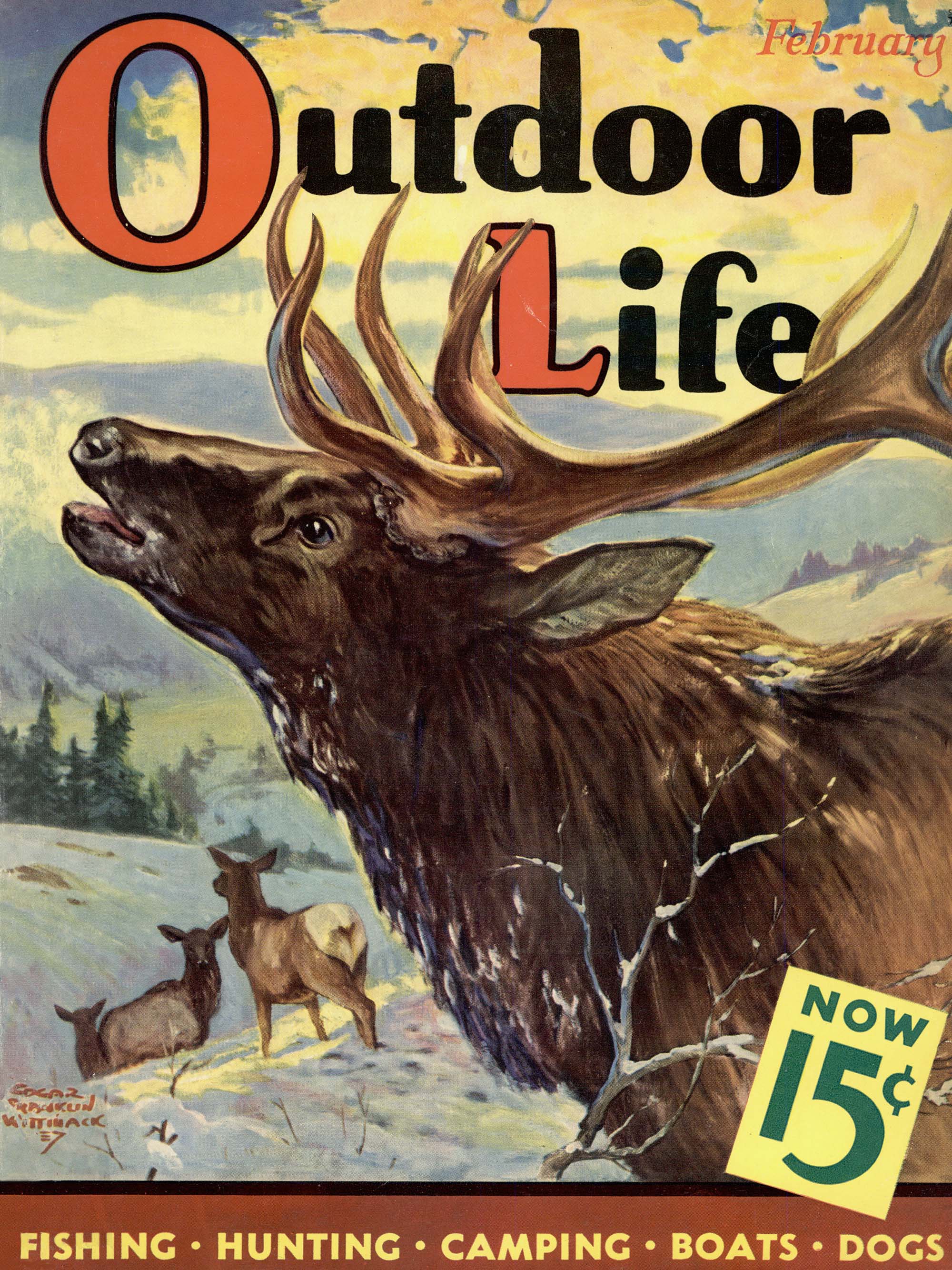
Outdoor Li
After breakfast we mounted up and rode a dark trail up the mountains. It was beginning to get light when we topped out on an oak-covered bench. Miles below us, a few lights still twinkled in Ruidoso. Vernon reined up and stepped down.
“We’ll leave the horses here and go the last quarter-mile on foot.”
It was light enough to shoot when we reached the brush rim. We eased up carefully and began glassing the basin below. A mule-deer doe and her twin yearlings browsed 200 yards down the slope. On the far hillside Vernon spotted three wild horses, the first of many we were to see.
“Two bulls were in this basin a week ago,” Vernon said.
We continued glassing, but the only I’m framed by massive rack of my bull other animals we located were coyotes. They were howling and seemed to be playing a game of chase.
“The old people believe,” Vernon explained, “that when coyotes howl at dawn it will be a poor hunting day.”
We watched the basin until after sunrise, but no elk appeared, so we continued our climb toward stark Sierra Blanca. As we rode along I saw antler-scarred trees, fresh droppings, and plenty of tracks. After a couple of miles we tied the horses and began glassing the hills.
These mountains are a part of the Sacramento Range. Rocky, knifelike ridges jut out above timbered hills and canyons. Here and there open mountain meadows show golden against the black timber. The high-country aspens were aflame with color. This was some of the most beautiful elk country I’d ever hunted.
Vernon took a seat atop a pinnacle of rock and began using his 7×35 Leitz binoculars. I pulled out my elk bugle and made a call into a deep canyon to the south. The notes had scarcely stopped when a bull answered from dense pines far below. Then another bull bugled somewhere to the east.
My guide smiled but continued glassing the distant hills. That first bull must have answered me a dozen times, but he refused to come a step nearer. Finally he hushed, and I couldn’t provoke another reply. Then Vernon said softly, “Hey, you want to see two bulls battling it out?”
Through my glasses I watched as two bulls on a distant hillside sparred for control of a small herd of cows. After several minutes of combat the smaller bull broke and ran. The victor extended his neck and proclaimed himself king of the mountain, but his calls were swallowed up by the distance between us. It was a thrilling sight.
“That’s the elk we want,” Vernon said as the bull followed the· last of his harem into the trees.
We mounted up and climbed. above the timberline, crossing beneath the summit of Sierra Blanca, then turning south on a ride that took the rest of the day.
The sun was low when we tied our horses in the cover of an oak thicket. Quietly we moved up, and I took a seat overlooking a meadow within 200 yards of where we’d seen the bull early that morning. I kept my vigil until the crosshairs of my scope faded, but our bull didn’t show. It was a tough ride off that mountain in the dark, and we had to pick our way along as we followed the headwaters of the Ruidoso downward. The moon eventually rose above the rims and lit the trail to camp. It was after 11 p.m. when we swung down and unsaddled the horses.
Vernon said that he would return for breakfast at 4:15. He wanted to hunt an area called Carrizo. It was a broad sweep of country containing little water, and he was sure elk would be browsing near a particular waterhole.
It was in Carrizo the next morning that I almost called up the bull I mentioned at the beginning. After the bull spooked, Vernon and I hunted on foot through timbered ridges for the rest of the morning. At one point we walked into the midst of a small herd that had bedded down. Elk exploded on all sides, but I saw no horns.
About midafternoon we built a blind 200 yards from a waterhole surrounded by fresh sign. Thirty minutes before dark a small- band of wild horses came to drink, but no elk came.
On our ride back to camp Vernon said, “Tomorrow we hunt Cienegita Spring.”
He explained that this area was just south of where we’d seen the bulls fighting on opening day. I reminded him of the bull I’d heard bugle in Cienegita Canyon.
“Jeanette can trailer the horses to the foot of the mountain,” my guide said. “From there it’s only a thirty-minute ride to that big bull’s stomping ground. If he doesn’t show, we’ll hunt southward. There’s miles of good country in Cienegita, and we could find a bull anywhere.”
Next morning we saddled up by lantern light, loaded the horses into the trailer, and pulled out for Cienegita. By the time we had unloaded and ridden a mile north, a new day was dawning.
“We’re late,” Vernon whispered. “It’ll be daylight when we reach the meadow.”
Daybreak caught us as we topped out and paused to let the horses blow. Vernon dismounted and glassed the country to the west. A moment later he dropped his reins.
“What is it?” I asked.
“I think I see some elk across the canyon,” he whispered. “It’s still not light enough to be sure.”
I began to study the distant meadow with my 8X Bushnell glasses, and gradually the herd of a dozen or more took shape. They were over a mile away.
“The one nearest that black rock is a bull,” Vernon said at last. “I can’t say how good. They’ll probably feed into that timber to the left.”
“Let’s take a closer look,” I said. “It could be the herd bull we saw fighting.”
I slipped my rifle from its scabbard, and while Jeanette held our horses Vernon and I worked our way off the mountain and across the canyon to the west. We moved through oak and aspen, carefully avoiding open areas. We stopped when we neared the meadow where we’d seen the bull.
“I’ll wait here,” Vernon said. “There’s not enough cover up there to hide us both.”
I shucked my down jacket, camera, and binoculars. I wanted nothing to interfere with a possible shot. I moved up 50 yards in a low crouch. Then the cover played out, so I crawled the last 10 yards through knee-high brush.
At first I found only two cows. I eased up on one knee, and then I saw him 125 yards away. He stood huge and magnificent, with sweeping mahogany antlers, dark matted mane, and creamy brown hide. He carried six points on each side. No picture has ever captured the image of a great elk in the wild.
As I looked, he took several steps forward and scanned the meadow. I would have to shoot off-hand. I flipped off the safety and planted the crosshairs as firmly as I could hold on the point of his shoulder. The rifle bucked, but the bull didn’t go down. As he started to move out I hammered him again, and this time he dropped.
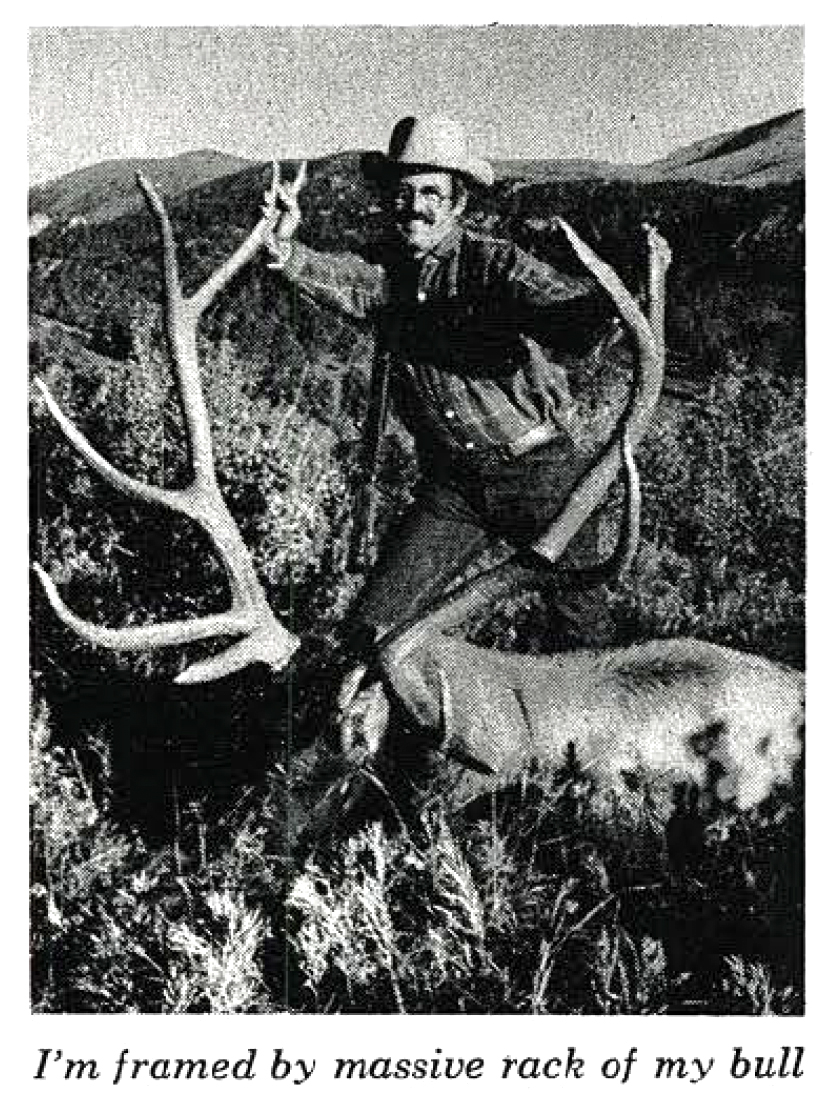
Bull elk are awesome creatures, and it is a profound experience to bag one. Both shots had connected, the first bullet striking to the front of the shoulder but missing bone and vitals. The second 150-groin Sierra boattail hit him just behind the shoulders and lodged beneath the hide on the off side. He was hard in the rut and rank with the odor of musk and urine. One brow tine had been freshly broken, perhaps in combat with the other bull we’d seen.
Jeanette brought the horses over from the far hillside, where she had watched the action through her binoculars. We took some pictures, and then Vernon and I field-dressed my elk.
In late afternoon we finally delivered the bull to a local processing plant, where the meat was converted into nearly 500 pounds of steaks, chops, and ground meat. All these packages were frozen for the trip home.
The drive home took two days, but the meat-which I’d packed into inexpensive foam-plastic containers along with small pieces of dry ice-was still frozen. Soon my bull’s head will grace a wall of my den.
Read Next: How to Insult Your Western Hunting Guide
It is reported that at least one bull taken during last year’s hunt will qualify for the Boone and Crockett Club’s record book. I’m convinced that a sizable number of bulls among the Mescalero herd carry record-book racks.
There were 100 permits offered last fall. Only 28 were sold. Thanks to prudent and progressive game management on tribal lands, the Mescalero elk herd continues to expand rapidly. More permits should be available each year, giving more and more hunters the opportunity to stalk a bull in some of the most beautiful country in the West.
This story, “Elk of the Mescalero,” first appeared in the August 1975 issue of Outdoor Life.
The post Bulls of the Mescalero: A Southerner’s First Elk Hunt During the Rut appeared first on Outdoor Life.
Source: https://www.outdoorlife.com/hunting/mescalero-elk-rut/


